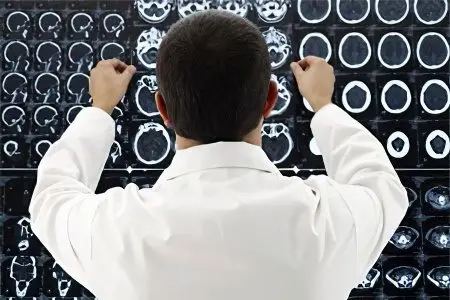Contents
What is atherosclerosis of the main arteries?
Atherosclerosis of the main arteries is a disease of a chronic nature and is expressed in the narrowing of the lumen or complete blockage of the blood vessels of the head, neck and extremities. Accompanied by the formation of atherosclerotic plaques (lipid infiltrations) due to calcification and proliferation of connective tissue. This eventually leads to insufficient blood circulation in the brain or limbs.
Atherosclerosis, affecting the main arteries of the lower extremities, is observed most often. Mostly this pathology manifests itself in men who have crossed the age limit of 40 years. But after a woman enters the postmenopausal period, the chances of developing atherosclerosis in both sexes are equalized. The same applies to atherosclerosis of the main arteries of the head and neck.
Symptoms of atherosclerosis of the main arteries

Depending on which main arteries have been damaged by atherosclerosis, the symptoms of the disease will differ.
If we are talking about damage to the artery of the brain, then the person will experience:
Attacks of headache and dizziness of varying intensity;
Noises in the ears;
Difficulty falling asleep, waking up in the middle of the night, feeling sleepy during the daytime against the background of general overwork;
Decreased short-term memory;
Change in character traits, the appearance of tearfulness, increased levels of anxiety, excessive suspicion and emotional lability;
Gait and speech disorders, as well as other neurological disorders.
When atherosclerosis affects the main arteries of the upper and lower extremities, it will manifest itself as follows:
With damage to the arteries of the lower extremities, a person most often suffers from intermittent claudication;
The feeling of fatigue from walking comes much earlier, the passage of a long section of the path becomes a laborious task;
There is dystrophy of the nail plates, hair loss on the legs, a decrease in the size of the calf muscles.
Gangrene of the extremities is the apogee of the development of the disease;
Decreased pulsation in the arteries;
If the arteries of the upper extremities are primarily affected, then a person experiences cold in the hands, ulcers may form, and small wounds will bleed for a long time.
Causes of the disease
The reasons leading to the formation of lipid deposits in any main arteries are the same.
Regardless of where the atherosclerotic plaque was localized, the following factors provoked its growth:
High blood pressure that is not controlled or treated for a long period of time;
Adherence to bad habits, in particular, smoking;
The content of cholesterol in the blood, exceeding the norm;
Excess body weight;
Diseases of the endocrine system;
Violation of glucose absorption;
Sedentary lifestyle;
Errors in nutrition;
Age-related changes, which are an irremovable provoking factor;
Frequent stress.
Diagnostics

In order to begin the treatment of atherosclerosis, it is necessary to determine the location of the lesion of the artery, the severity of the lipid plaque, its nature, the degree of calcification and proliferation of connective tissue. To do this, you need to come to an appointment with a therapist who, after a standard examination and history taking, will send the patient to undergo an ultrasound angioscanning of the arteries of the head, neck or lower extremities.
If it is not possible to recreate the integrity of the picture, then additional studies are required, such as MRI or X-ray angiography.
To obtain the most complete information about the patient’s condition, he will need to pass a general and biochemical blood test.
Treatment of atherosclerosis of the main arteries
Treatment of atherosclerosis of the main arteries is impossible without an integrated approach. It will not be possible to improve the state of health only by adhering to proper nutrition, or, on the contrary, only by taking pills prescribed by a doctor.
Medical treatment is reduced to taking the following drugs:
Antiplatelet agents, including cardiomagnyl, plavix, thrombo-ass and others;
Means aimed at reducing blood viscosity. These include phlogenzym, sulodexide and others;
Drugs to improve peripheral circulation – nicotinic acid, alprostan;
Drugs that increase collateral circulation. These are Actovegin and Solcoseryl;
Means that can lower blood cholesterol levels: statins and fibrates;
In addition, patients are shown lifelong anticoagulants, which can reduce the risk of blood clots. It can be either cardiomagnyl or thrombo-ass. The course intake of vitamins is aimed at maintaining the normal state of tissues and organs that lack blood circulation.
It is also recommended to include in the complex treatment herbal preparations for atherosclerosis, which have proven their effectiveness. These include: Inflaminate, Nattokinase, Revital Garlic Pearls, Ravisol – more about them are described here
Patients diagnosed with atherosclerosis of the main arteries will need to reconsider their lifestyle. This includes giving up bad habits: drinking alcohol and smoking. In the presence of excess weight, its mandatory reduction is necessary. Revision of the diet is another condition in order to avoid the consequences of atherosclerotic lesions. Equally important is the medical correction of high blood pressure and regular physical exercise.
If an atherosclerotic plaque has narrowed the lumen of the artery by more than 50%, then the patient is necessarily referred for a consultation with a vascular surgeon, who decides on the need for surgical intervention.









